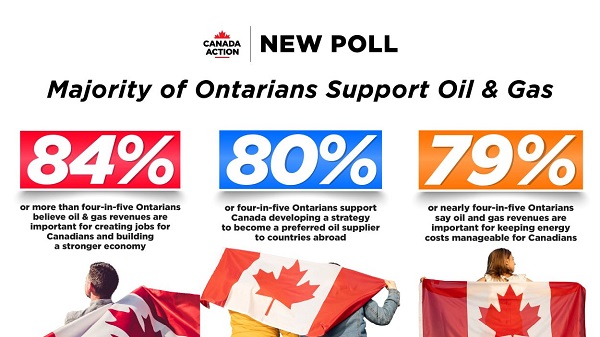International
Bill Maher Torches California’s Disastrous Wildfire Response in Brutal Monologue

After 27 fatalities, the destruction of over 12,000 structures, and $150 to $250 billion in damages, California resident and comedian Bill Maher didn’t hold back his outrage over his state’s catastrophic wildfire response on Real Time.
In a scathing monologue, Maher first pointed out to the climate cult that mandating EVs and shaming people for their carbon footprints means nothing when the government can’t even manage wildfires.
“You know what the absolute worst thing for the environment is? Wildfires. A 2022 study found that the smoke from just the two in 2020 wiped out 18 years of carbon reduction in the state—which means we suffered the pain of driving those early-model Priuses for nothing,” Maher quipped.
Join 100K+ Substack readers and 1.5 million 𝕏 users who follow the work of Vigilant Fox. Subscribe to Vigilant News for exclusive stories you won’t find anywhere else.
Maher zeroed in on LA Mayor Karen Bass’s selection of Kristin Crowley as fire chief, suggesting she was only chosen for being the “best lesbian” for the job instead of the best person—something Maher argued was “not good enough” for essential services.
“Am I against a lesbian being chief? Of course not. Do I think a lesbian can do the job? Of course, I do. And maybe she’s the best person for the job. Or maybe they really wanted a lesbian in that job, and she’s just the best lesbian for the job, and with essential services, that’s not good enough,” Maher snapped.
“Crowley’s official bio says, ‘Chief Crowley leads a diverse department, creating, supporting, and promoting a culture that values diversity, inclusion, and equity, while striving to meet and exceed the expectations of the communities.’ Well, you didn’t exceed my expectations, which was that the whole city wouldn’t burn down!” he stressed.
“But it’s telling that diversity is mentioned twice before we get to ‘while striving to meet expectations.’ Now, can you do two things at once? Yes, but it matters where your head is,” Maher argued.
Maher went on to admit that it’s “not wrong” to blame wokeness for California’s disastrous fire response, turning his attention to Deputy Fire Chief Kristine Larson, whose recent comments are so absurd that Maher called them “kind of racist.”
Larson said in a viral social media post, “You want to see somebody that responds to your house, your emergency, whether it’s a medical call or a fire call that looks like you.”
Maher fired back at this statement, saying, “which would sound kind of racist if a Southern sheriff said it.”
“Now, is wokeness the main reason for the fires? Of course not,” Maher said. “But let’s not pretend it hasn’t played a role. Our government’s unforced errors are straight out of the progressive playbook: questionable budget priorities, sky-high taxes that get you nothing, and a constant obsession with identity politics instead of fixing what’s broken.”
“Cali’s got commissions, agencies, bureaucrats, and even sign language interpreters who emote with their face,” Maher continued. “But where’s the common sense? Where’s the action?” he asked.
In his final words, Maher warned California that they better figure out how to actually govern “soon” because “wildfires in California are like boob jobs in a strip club: inevitable, and only getting bigger.”
Watch the full monologue below:
Thanks for reading! If you enjoyed this post, please do me a quick favor and follow this page (@VigilantFox) for more reports like this one.
Business
Federal funds FROZEN after massive fraud uncovered: Trump cuts off Minnesota child care money

The Trump administration has cut off all federal child care payments to Minnesota, ordering a sweeping audit of the state’s day care system as investigators dig into what officials describe as one of the largest fraud schemes ever tied to social service programs.
“We have frozen all child care payments to the state of Minnesota,” Deputy Health and Human Services Secretary Jim O’Neill wrote Tuesday afternoon, saying the move comes after mounting evidence that taxpayer dollars were being siphoned to sham or non-operational day care centers. The freeze follows a viral investigative video that put a national spotlight on facilities across Minneapolis that were receiving large sums of public money despite appearing closed or barely functioning.
According to Alex Adams, assistant secretary at HHS’s Administration for Children and Families, Minnesota has already received roughly $185 million in federal child care funding this year alone. Those funds, the administration says, will remain locked down until the state can demonstrate that payments are being used lawfully. “Funds will be released only when states prove they are being spent legitimately,” Adams said.
We have frozen all child care payments to the state of Minnesota.
You have probably read the serious allegations that the state of Minnesota has funneled millions of taxpayer dollars to fraudulent daycares across Minnesota over the past decade.
Today we have taken three actions… pic.twitter.com/VYbyf3WGop
— Deputy Secretary Jim O'Neill (@HHS_Jim) December 30, 2025
O’Neill accused Minnesota officials of allowing abuse to fester for years, alleging the state has “funneled millions of taxpayer dollars to fraudulent daycares across Minnesota over the past decade.” To halt further losses, HHS outlined a series of immediate enforcement steps. Going forward, states seeking reimbursement through the Administration for Children and Families will be required to provide receipts or photographic proof documenting how funds are spent.
The department has also formally demanded that Gov. Tim Walz order a “comprehensive audit” of the day care centers flagged by investigators. O’Neill said the review must include attendance records, licensing documents, complaints, investigative files, and inspection reports. He pointed directly to a video published Friday by YouTuber Nick Shirley, who visited multiple Minneapolis-area centers listed as receiving millions in public funds but found locations that appeared closed or inactive.
In addition, HHS has launched a dedicated fraud hotline and email address at childcare.gov to encourage tips from parents, providers, and the public. “We have turned off the money spigot and we are finding the fraud,” O’Neill said, urging anyone with information to come forward.
Federal prosecutors say the scope of the alleged abuse is staggering. Authorities have already confirmed at least $1 billion in fraud tied to Minnesota child care programs, with 92 people charged so far. The U.S. Attorney’s Office has warned the total could ultimately reach as high as $9 billion as investigators continue combing through records.
The funding freeze marks one of the most aggressive crackdowns yet by the Trump administration on state-run social programs accused of lax oversight, sending a clear message that federal dollars will not flow until Minnesota can account for where the money went — and who was cashing in.
Business
Resurfaced Video Shows How Somali Scammers Used Day Care Centers To Scam State


From the Daily Caller News Foundation
A resurfaced 2018 video from a Minneapolis-area TV station shows how Somali scammers allegedly bilked Minnesota out of millions of dollars for services that they never provided.
Independent journalist Nick Shirley touched off a storm on social media Friday after he posted a photo of one day-care center, which displayed a banner calling it “The Greater Learing Center” on X, along with a 42-minute video that went viral showing him visiting that and other day-care centers. The surveillance video, which aired on Fox 9 in 2018 after being taken in 2015, showed parents taking kids into the center, then leaving with them minutes later, according to Fox News.
“They were billing too much, they went up to high,” Hennepin County attorney Mike Freeman told Fox 9 in 2018. “It’s hard to imagine they were serving that many people. Frankly if you’re going to cheat, cheat little, because if you cheat big, you’re going to get caught.”
Dear Readers:
As a nonprofit, we are dependent on the generosity of our readers.
Please consider making a small donation of any amount here.
Thank you!
Democratic Gov. Tim Walz of Minnesota was accused of engaging in “systemic” retaliation against whistleblowers in a Nov. 30 statement by state employees. Assistant United States Attorney Joe Thompson announced on Dec. 18 that the amount of suspected fraud in Minnesota’s Medicaid program had reached over $9 billion.
After Shirley’s video went viral, FBI Director Kash Patel announced the agency was already sending additional resources in a Sunday post on X, citing the case surrounding Feeding Our Future, which at one point accused the Minnesota government of racism during litigation over the suspension of funds after earlier allegations of fraud.
KSTP reported that the Quality Learning Center, one of the centers visited by Shirley, had 95 citations for violations from one Minnesota agency between 2019 to 2023.
President Donald Trump announced in a Nov. 21 post on Truth Social that he would end “Temporary Protected Status” for Somalis in the state in response to allegations of welfare fraud and said that the influx of refugees had “destroyed our country.”
-

 Alberta2 days ago
Alberta2 days agoThe Canadian Energy Centre’s biggest stories of 2025
-

 Business2 days ago
Business2 days agoResurfaced Video Shows How Somali Scammers Used Day Care Centers To Scam State
-

 Business17 hours ago
Business17 hours agoDark clouds loom over Canada’s economy in 2026
-

 Addictions13 hours ago
Addictions13 hours agoCoffee, Nicotine, and the Politics of Acceptable Addiction
-

 Business2 days ago
Business2 days agoOttawa Is Still Dodging The China Interference Threat
-

 Business2 days ago
Business2 days agoMinneapolis day care filmed empty suddenly fills with kids
-

 Business2 days ago
Business2 days agoDisclosures reveal Minnesota politician’s husband’s companies surged thousands-fold amid Somali fraud crisis
-

 Business16 hours ago
Business16 hours agoFederal funds FROZEN after massive fraud uncovered: Trump cuts off Minnesota child care money










